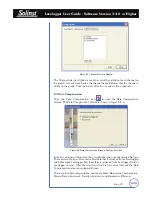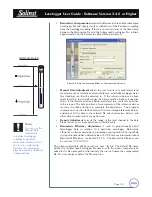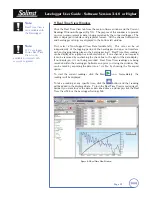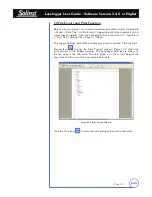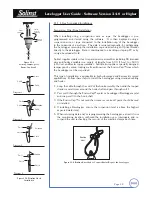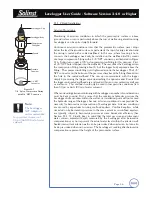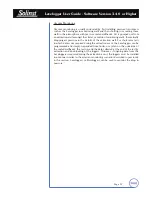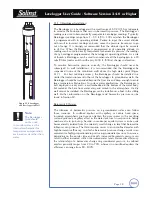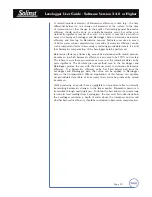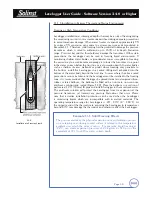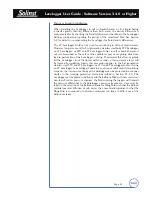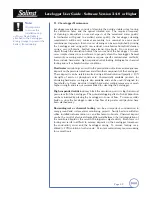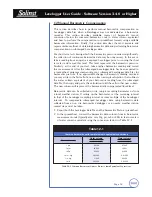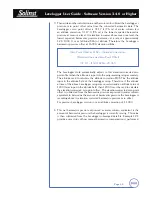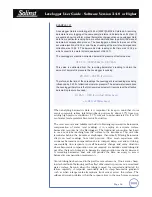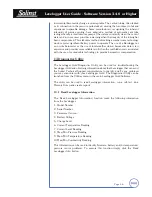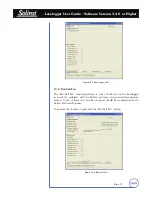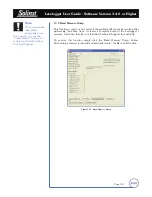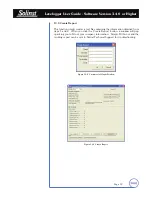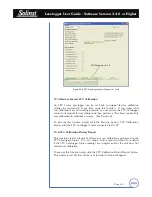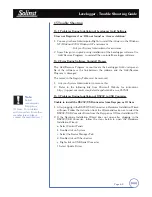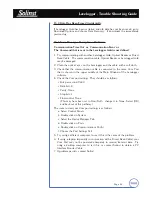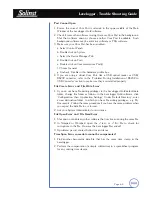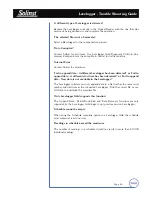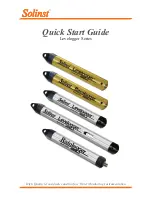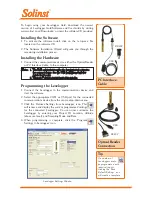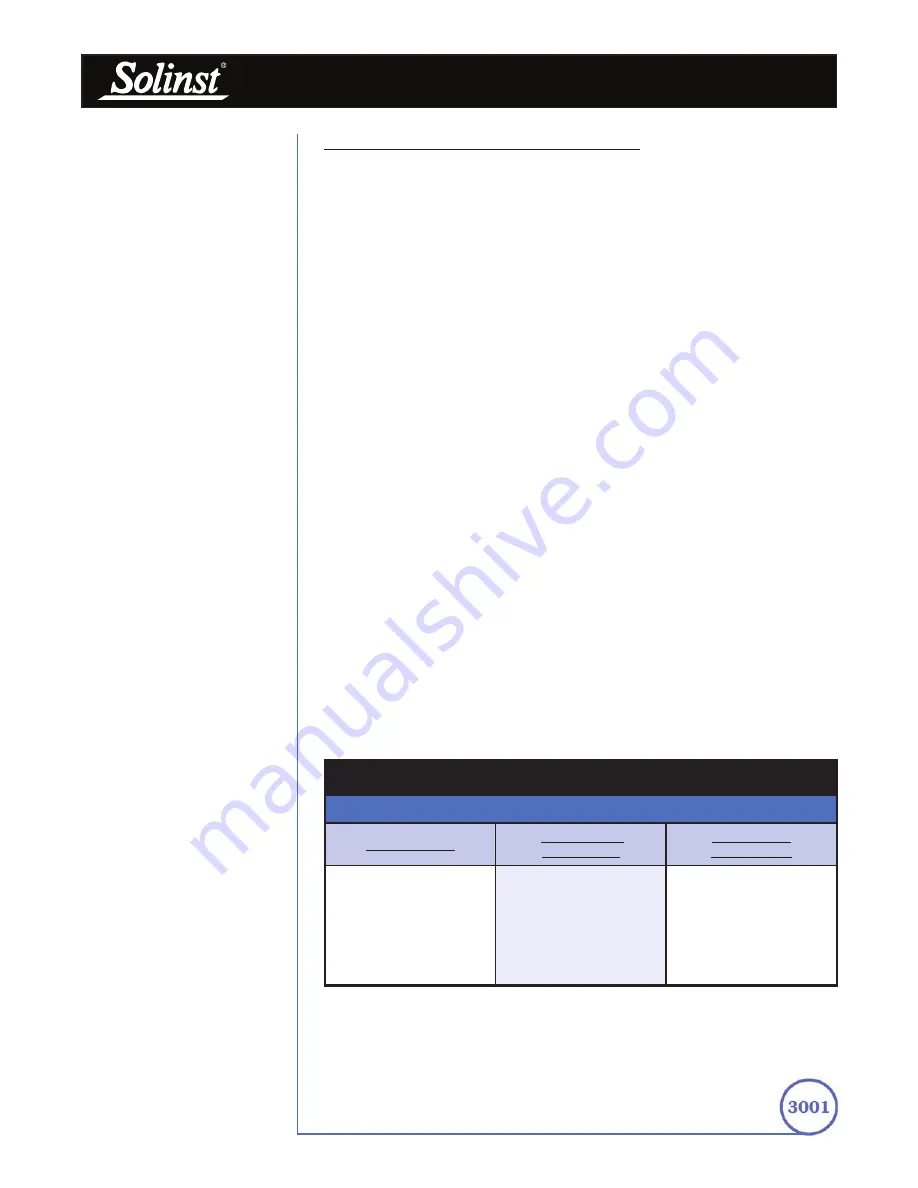
Levelogger User Guide - Software Version 3.4.0 or Higher
Page 53
12 Manual Barometric Compensation
This section describes how to perform manual barometric compensation on
Levelogger data files when a Barologger was not dedicated as a barometric
recorder. This section describes available sources of barometric record,
conversion factors for common barometric units to water column equivalent
and how to perform the compensation in spreadsheet formats using available
barometric information. Finally, this section describes the most accurate and
representative methods of obtaining barometric data and performing barometric
compensation on submerged Levelogger data.
For short term tests during which the barometric pressure varies insignificantly,
the collection of continuous barometric data may be unnecessary. In this event,
take a reading from an open air exposed Levelogger prior to running the short
term test and record this level. This level represents the barometric pressure.
Similarly, at the end of your test, take another barometric reading and record
this measurement. After the submerged Levelogger data has been exported to
a spreadsheet program compensate your submerged Levelogger data files for
barometric pressure. If no appreciable change in barometric reading occurred,
you may write in the first cell of a new column a simple calculation that subtracts
the water column equivalent of your barometric reading from the submerged
data file, then copy and paste this calculation to all the cells in that new column.
The new column will represent the barometrically compensated liquid level.
Barometric data can be collected on site using a recording barometer or from
a local weather station. If setting up the barometer, set the recording interval
to that of the Levelogger sampling interval or some multiple of the Levelogger
interval. To compensate submerged Levelogger data using barometric data
collected from an on site barometric datalogger or a nearby weather station
several steps must be taken:
1. Export both the Levelogger data file and the barometric file to a spreadsheet.
2. In the spreadsheet, convert the barometric data column from its barometric
measurement units (typically atm, mm Hg, psi, mb or kPa) to feet or meters
of water column equivalent using the conversion factors in Table 12-1.
Table 12-1 Common Barometric Units to Water column Equivalent Conversions
Table 12-1
Common barometric units to water column equivalent conversions
Barometric unit
Water column
equivalent (ft)
Water column
equivalent (m)
1 psi
2.3108
0.7043
1 atm
33.959
10.351
1 kPa
0.3352
0.1022
1 mm - Hg
0.04469
0.01362
1 in - Hg
1.1330
0.3453
1 mb
0.03352
0.01022

